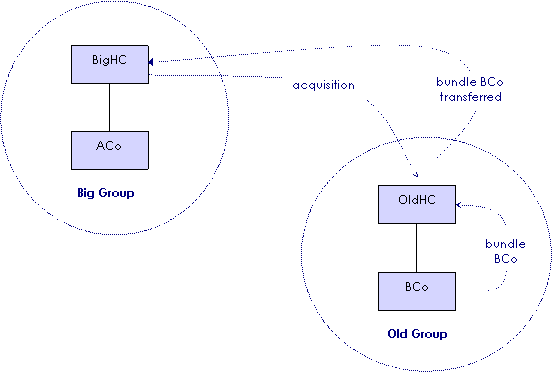Consolidation Reference Manual
You can still refer to the Consolidation reference manual for consolidation information that has not been impacted by changes in the legislation.
C3 Losses
C3-4 Worked example - loss utilisation
Adjusting the available fraction
C3-4-310 Adjusting available fraction - previously transferred losses are transferred again
Description
Available fractions are adjusted to ensure they continue to approximate the proportion of the group's income that can be said to be generated by the relevant entity or group that transferred the loss.
This example shows how the available fraction for a loss bundle is adjusted when the loss is transferred for a second or subsequent time.
- •
- loss bundles and calculating the available fraction → 'Treatment of losses', C3-1 ; 'Consolidation loss provisions', C3-2-110 (high-level worked example)
- •
- working out modified market value → 'Modified market value of a single joining entity', C3-4-110 (worked example)
- •
- market values → 'Market valuation guidelines', C4-1
Commentary
The available fraction for a loss bundle must be adjusted if the losses in it are being transferred for a second or subsequent time. This will generally occur when the head company of a consolidated group (the old group) joins another consolidated group (the new group) and transfers losses to the head company of the new group that had been previously transferred to it.
The available fraction for each bundle of previously transferred losses is adjusted by multiplying it by the factor at item 1 in the table in subsection 707-320(2). The factor is the lesser of one and this fraction:
market value of the old group / market value of the new joined group
The market values [F1] of the old and new groups are worked out as at the time the old group joins the new group. The new joined group is the whole group including the old group.
Example
Facts
A consolidatable group, 'Old Group', consolidates on 1 July 2003. A loss is transferred from subsidiary member BCo to OldHC when Old Group consolidates. An available fraction of 0.425 is established for bundle BCo at the initial transfer time.
On 1 July 2004 another consolidated group, 'Big Group', acquires Old Group.
This sequence of events is shown in Figure 1. Big Group must adjust the available fraction for the incoming loss bundle.
Figure 1: Big Group acquires Old Group

Market values are ascertained as at the time of the subsequent transfer (1 July 2004) as follows:
- •
- market value of Old Group = $500
- •
- market value of the new joined group = $1,500
- (including the market value of Old Group)
Calculation
Multiply the available fraction for bundle BCo by the factor:
0.425 * (500 / 1,500) = 0.142
The utilisation of the losses in bundle BCo are subject to limits determined by reference to the available fraction method. Assuming no other adjustment events occur during the income year, the available fraction that applies to bundle BCo for the 2005 income year is 0.142.
The new consolidated structure just after the transfer time is shown in Figure 2.
Figure 2: The new joined group

References
Income Tax Assessment Act 1997, subsection 707-320(2), section 707-330; as amended by New Business Tax System (Consolidation) Act (No.1) 2002 (No. 68 of 2002), Schedule 1
Explanatory Memorandum to the New Business Tax System (Consolidation) Bill (No. 1) 2002, Chapter 8
Current at 2 December 2002
Note that market value is used in the adjustment factor, as opposed to modified market value. Modified market value is used when an available fraction is being calculated for the first time.
